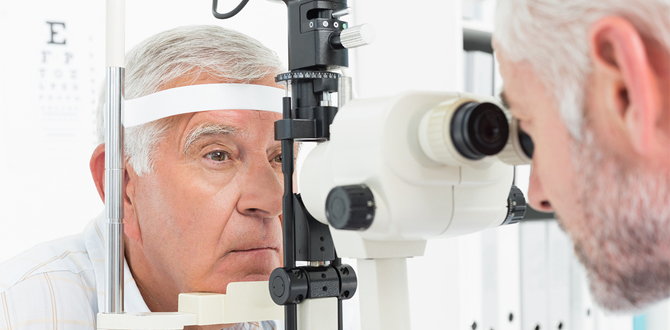This article provided by Comfort Keepers, an independent caregiving provider in the Masonic Value Network
Separating Fact from Fiction
The average person will undoubtedly hear a lot of inaccurate information throughout his or her lifetime. From politics to sports, misinformation is perpetuated no matter what the topic at hand might be. And it’s especially common in the world of health information. The subject of cataracts, in particular, has received its fair share of myths and wives’ tales throughout the years, centered not only around the formation of cataracts, but also the surgical procedure to have them removed.
Cataracts represent the leading cause of blindness worldwide (with more cases than glaucoma, diabetic retinopathy, and macular degeneration combined), and they are known to primarily affect older adults. In fact, it’s estimated that, by the age of 80, more than 50% of all Americans will have had a cataract or cataract surgery. With these facts in mind, it’s vital that seniors have the right information to better understand the condition and know what to do if they have them.
Five Cataracts Myths
- Cataracts grow on the eye: Rather than being a type of “growth,” cataracts are often the result of protein fibers clumping together and clouding the eyes’ lenses. This then causes light to become scattered or blocked completely as it passes through the lens, which prohibits the retina from receiving a clearly defined image. Some cataracts are caused by overexposure to ultraviolet light, eye injury, and as a result of diabetes.
- Blurred vision is the only symptom: While blurred vision is the most commonly reported symptom of cataracts, people also experience extreme sensitivity to light, both inside and outside. Other symptoms include frequent changes in eyeglass or contact lens prescriptions, double vision, color changes, and increased difficulty with nighttime vision.
- Cataracts are preventable: Technically, no. While there’s no study on cataract prevention, medical professionals do believe that there are strategies that may help in reducing the risk of cataract development and slowing its progression. For starters, older adults should see their eye care professional once a year. These visits will help identify signs of cataracts as well as other eye diseases. Other helpful measures include incorporating a healthy diet (full of fruits and vegetables), and avoiding smoking and drinking. As mentioned above, cataracts can form from exposure to sunlight, so it’s important to always wear sunglasses with 100% UVA and UVB protection.
- Cataract surgery is dangerous for older adults: Thanks to years of technological advancements, cataract surgery is widely regarded as one of the safest medical procedures, with a success rate of 95-98%. Patients often only need minimal sedation, which allows those in their 80s and 90s to undergo the operation. Recovery from the surgery is also less demanding that that of other procedures. By and large, patients will need to refrain from rubbing their eye(s) and lifting heavy objects, for up to three weeks. Despite the success rate, it should be noted that no surgical procedure is ever without risk. Seniors should talk to their eye surgeon and other medical care professionals before agreeing to cataract surgery.
- Cataracts can come back: Once a cataract has been removed from the lens, it will not return. In the months or years following surgery, a “secondary” cataract may develop when the membrane that holds the artificial lens implant becomes cloudy. However, this can be corrected with a quick and painless procedure, known as a YAG laser capsulotomy, in which the eye surgeon creates a small opening in the membrane to help restore visual acuity.
Comfort Keepers® Can Help
Although post-cataract surgery recovery may only last a few weeks, it can still impact a senior’s daily living. For family
caregivers concerned about their loved ones’ wellbeing after surgery, Comfort Keepers can lend a helping hand. Our
professionally trained caregivers can provide mobility assistance, meal preparation, and assistance with laundry and
housekeeping. Because recovery may require some seniors to take a break from driving, we can also provide
transportation to appointments or anywhere else they need to go. Find an office near you by calling (888) 778-9619
and learn about how we can help support senior safety, health, and independence.
Fast Fact
It’s estimated that 90% of people who have cataract surgery regain useful vision.
References:
Prevent Blindness America. “Facts & Myths About Cataracts.” Web. 2018.
Vision Source. “Is There Any Way to Prevent Cataracts?” Web. 2018.
CNIB. “Cataract Myths and Facts.” Web. 2018.
American Academy of Opthamology. “Is cataract surgery safe for patients above 65 years of age?” by David F Chang
MD. Web. 2014.
WebMD. “Slideshow: A Visual Guide to Cataracts” Reviewed by Brian S. Boxer Wachler, MD. Web. 2018.
American Academy of Ophthalmology. “Cataract Facts and Myths.” Web. 2013.

